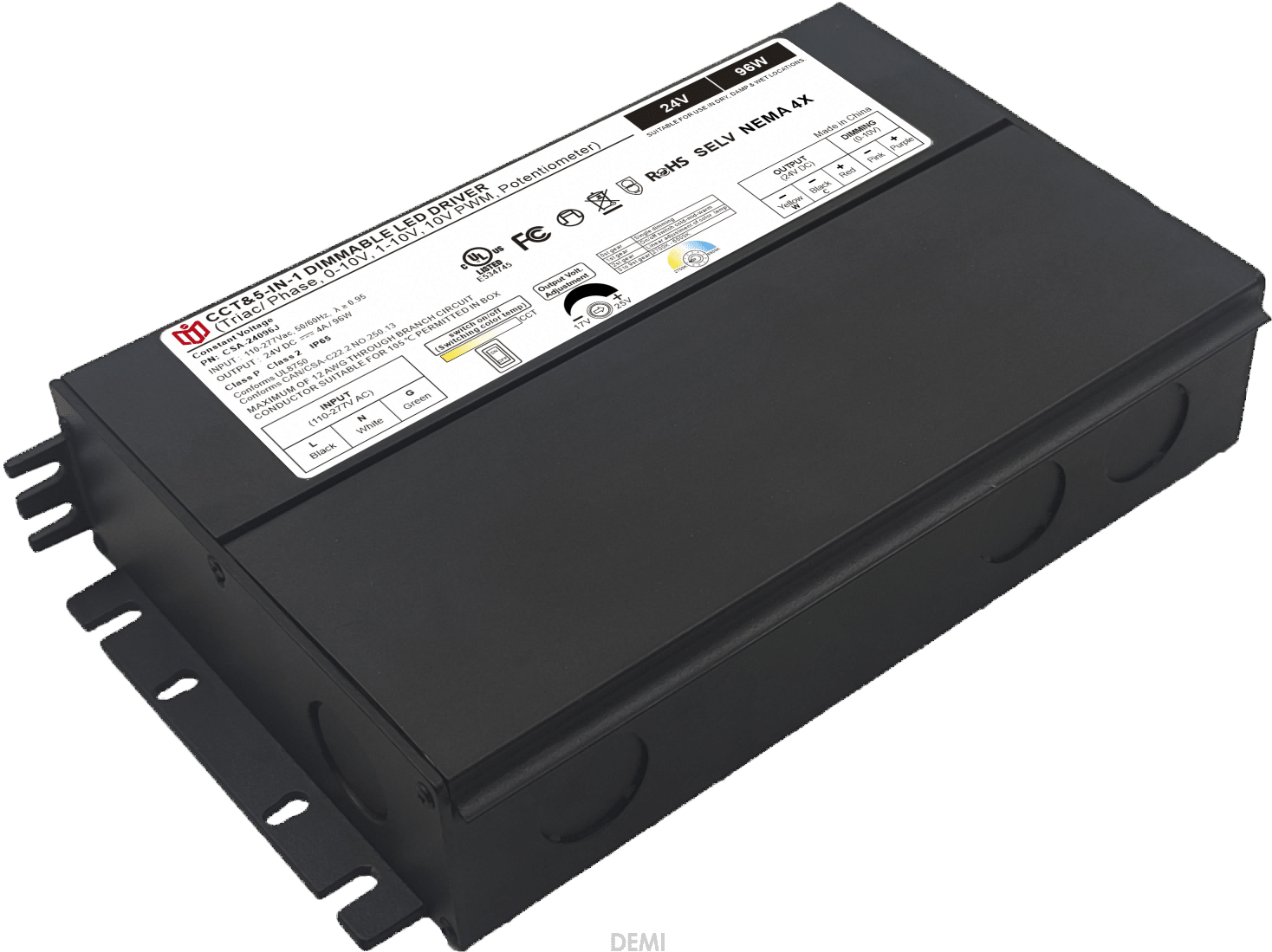What makes TRIAC dimming the preferred standard for industrial-grade dimming solutions?
Precision Phase Control Architecture
At the core of TRIAC dimmers lies an advanced alternating current chopping mechanism that precisely regulates power delivery by strategically intercepting both halves of the AC sine wave. Unlike simpler PWM alternatives, this bidirectional switching capability enables granular brightness adjustment from 0.1% to 100% without introducing perceptible flicker or audible noise – critical factors for maintaining visual comfort in factory floors and warehouse environments where workers operate heavy machinery under varying light conditions.
Universal Electrical Compatibility
A defining strength of TRIAC technology is its inherent adaptability to global power grids (90–264VAC, 50/60Hz), eliminating regional certification barriers common with competing topologies. The self-synchronizing triggering system automatically adjusts to input frequency fluctuations, ensuring consistent performance whether deployed in North American single-phase facilities or European three-phase distribution networks. This universality drastically reduces inventory complexity for OEMs serving multinational clients.
Robust Thermal Management Systems
Modern industrial-grade TRIAC modules incorporate copper substrate PCBs with thermal via arrays that dissipate heat 37% more efficiently than traditional designs. When paired with forced-air cooling channels in enclosure mountings, these components maintain stable operation up to +85°C ambient temperature – exceeding IEC 60068 vibration resistance standards even when mounted directly onto motor housings or conveyor belts generating continuous mechanical shocks.
Intelligent System Integration Capabilities
Beyond basic dimming functions, programmable TRIAC controllers support digital communication protocols like DALI-2 and KNX, enabling centralized management through building automation systems. Advanced models feature auto-calibration algorithms that compensate for ballast aging in fluorescent fixtures and automatically adjust cutoff angles based on real-time line voltage measurements, ensuring consistent illuminance levels despite grid fluctuations affecting ±15% nominal supply variations.

Cost-Effective Scalability
With component costs stabilizing at $0.85/unit for bulk orders (vs. $2.30+ for MOSFET alternatives), TRIAC solutions offer the lowest total cost of ownership over product lifecycles exceeding 50,000 hours L70 maintenance schedules. The absence of complex gate drivers further reduces BOM complexity by 40%, while standardized form factors allow drop-in replacement upgrades without modifying existing fixturing or wiring harnesses during retrofit projects.
Proven Reliability Under Harsh Conditions
Field tests conducted in metallurgical plants demonstrate 99.999% survival rates after exposure to electromagnetic interference exceeding ISO 11452 Level 5 radiation fields. IP67-rated enclosure versions resist dust infiltration and temporary submersion during cleaning cycles, while reinforced isolation barriers prevent accidental contact between high-voltage lines and low-voltage control circuitry – meeting stringent UL 1598 safety certification requirements for hazardous locations.
Energy Conservation Mechanisms
Dynamic power factor correction circuitry integrated within smart TRIAC drivers maintains displacement factors above 0.95 across all load levels, reducing reactive penalties on utility bills. When combined with occupancy sensors and photocell inputs, these systems automatically scale output to match actual daylight availability, achieving up to 32% energy savings compared to static non-dimming installations according to DOE test protocols.
Seamless Human-Machine Interfacing
Contemporary interfaces merge tactile rotary encoders with color LCD displays showing real-time parameters including active power draw (Watts), cumulative kWh consumption, and estimated lamp lifespan remaining. Cloud connectivity options enable predictive maintenance alerts via SCADA systems before component failure occurs, minimizing unplanned downtime in mission-critical facilities like cold storage warehouses or cleanroom laboratories.
Regulatory Compliance Advantages
Manufacturers benefit from pre-certified modules meeting EN 61347 harmonic emission limits and FCC Part 15 Class B radiated emissions standards out-of-the-box. This eliminates months of redesign typically required for custom power supplies, accelerating time-to-market for new product introductions while ensuring compliance with RoHS directives regarding lead-free soldering and restricted substance usage.
Future-Proof Design Philosophy
Leading suppliers now offer pinout-compatible backward compatibility across generations, allowing field upgrades from analog controls to IoT-enabled variants without replacing entire light fixtures. Hot-swap capable designs permit maintenance technicians to exchange faulty modules without powering down production lines, preserving operational continuity in just-in-time manufacturing environments where every minute of downtime impacts bottom-line profits.
 In heritage architecture prote
In heritage architecture prote
 When small-batch customization
When small-batch customization
 Have the electromagnetic emiss
Have the electromagnetic emiss
 When Triac dimmable power supp
When Triac dimmable power supp
